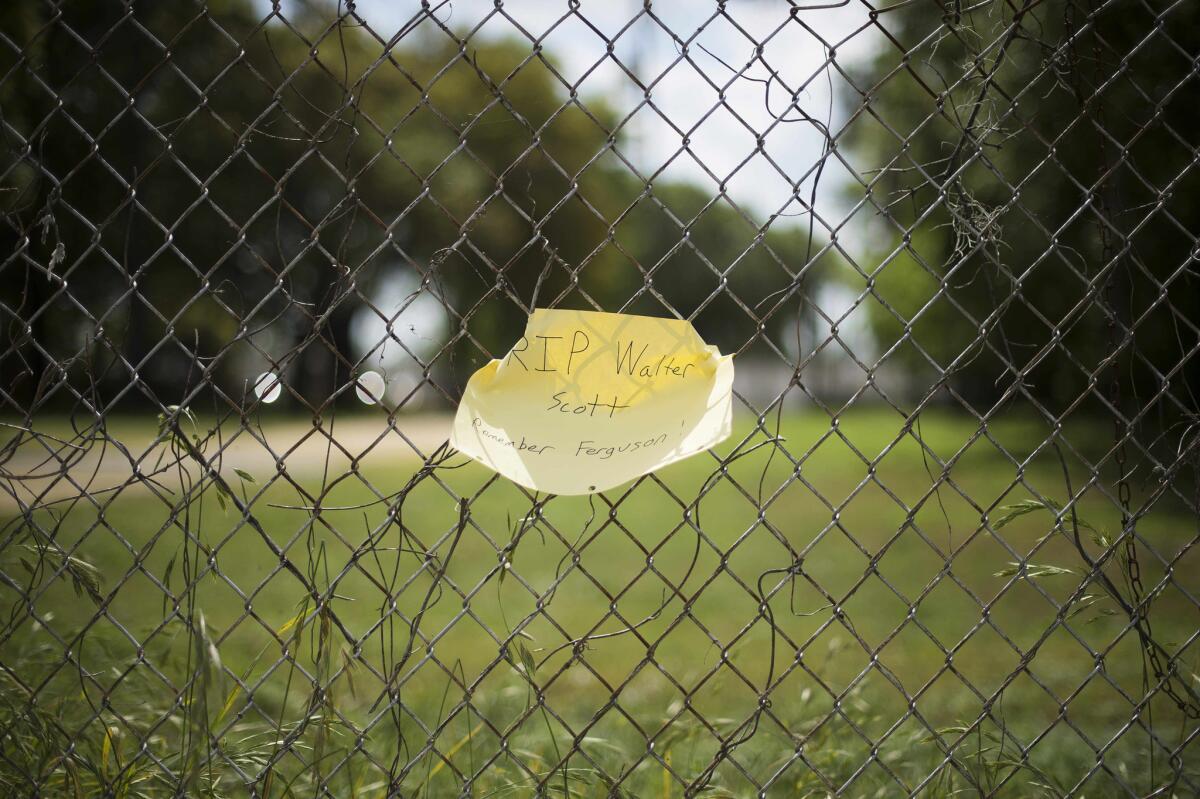How do cities’ police homicide rates compare? Question spotlights limits of U.S. data

- Share via
Since 1985, police in North Charleston, S.C., have recorded four “justifiable homicides” in which a felon was killed by an officer, according to FBI data. All those killed were male. Two were white, two black.
But how does that number (as compiled by criminologist James Alan Fox at Northeastern University) compare with other cities of the same size? And has the number of police shootings gone up in recent years across the country?
Those are important questions, but there is no reliable data available to answer them.
The national uproar over the recent shooting of a fleeing black man in North Charleston has renewed the debate about police use of force. It also is shining a light on the limitations of federal data to track how often police shoot and kill in the line of duty.
During a February speech at Georgetown University, FBI Director James B. Comey acknowledged those shortcomings.
Following the shooting death of teenager Michael Brown -- and the ensuing riots -- in Ferguson, Mo., last summer, Comey asked his staff to tell him how many black people had been shot by police across the country.
“I wanted to see trends. I wanted to see information,” Comey said.
“They couldn’t give it to me, and it wasn’t their fault. Demographic data regarding officer-involved shootings is not consistently reported to us ... because reporting is voluntary, our data is incomplete and therefore, in the aggregate, unreliable.”
Such reporting is mandated in South Carolina.
The Los Angeles Police Department files detailed reports for use-of-force incidents to the Police Commission -- a common practice among big-city agencies.
But that level of reporting does not typically occur at smaller departments, said Michael Maltz, criminology professor emeritus at University of Illinois at Chicago.
Each year, the FBI gathers and publishes the number of justifiable homicides reported by police departments. According to the agency, there were 461 justifiable homicides by law enforcement officers in 2013 and 426 the year before.
“There is really no consistent or reliable reporting,” Maltz said.
The FBI, Comey said, must improve how it collects and analyzes data from law enforcement agencies.
“I intend for the FBI to be a leader in urging departments around this country to give us the facts we need for an informed discussion, the facts all of us need to help us make sound policy and sound decisions,” he said.
To that end, the agency said it would move away from its current crime reporting system to one that collects more detailed information.
The National Incident Based Reporting System, used by about one-third of law enforcement agencies in the United States, will be expanded to better track how often police use deadly force and the demographic breakdown of victims.
“In essence, it’s much richer data,” said Stephen Fischer, spokesman for the FBI’s Criminal Justice Information Services. “We also pitch to law enforcement agencies that it helps them with transparency and accountability.”
Also, an FBI board will vote this year on whether to recommend that the agency record data on all officer-involved shootings, including nonfatal incidents, Fischer said.
More to Read
Sign up for Essential California
The most important California stories and recommendations in your inbox every morning.
You may occasionally receive promotional content from the Los Angeles Times.














